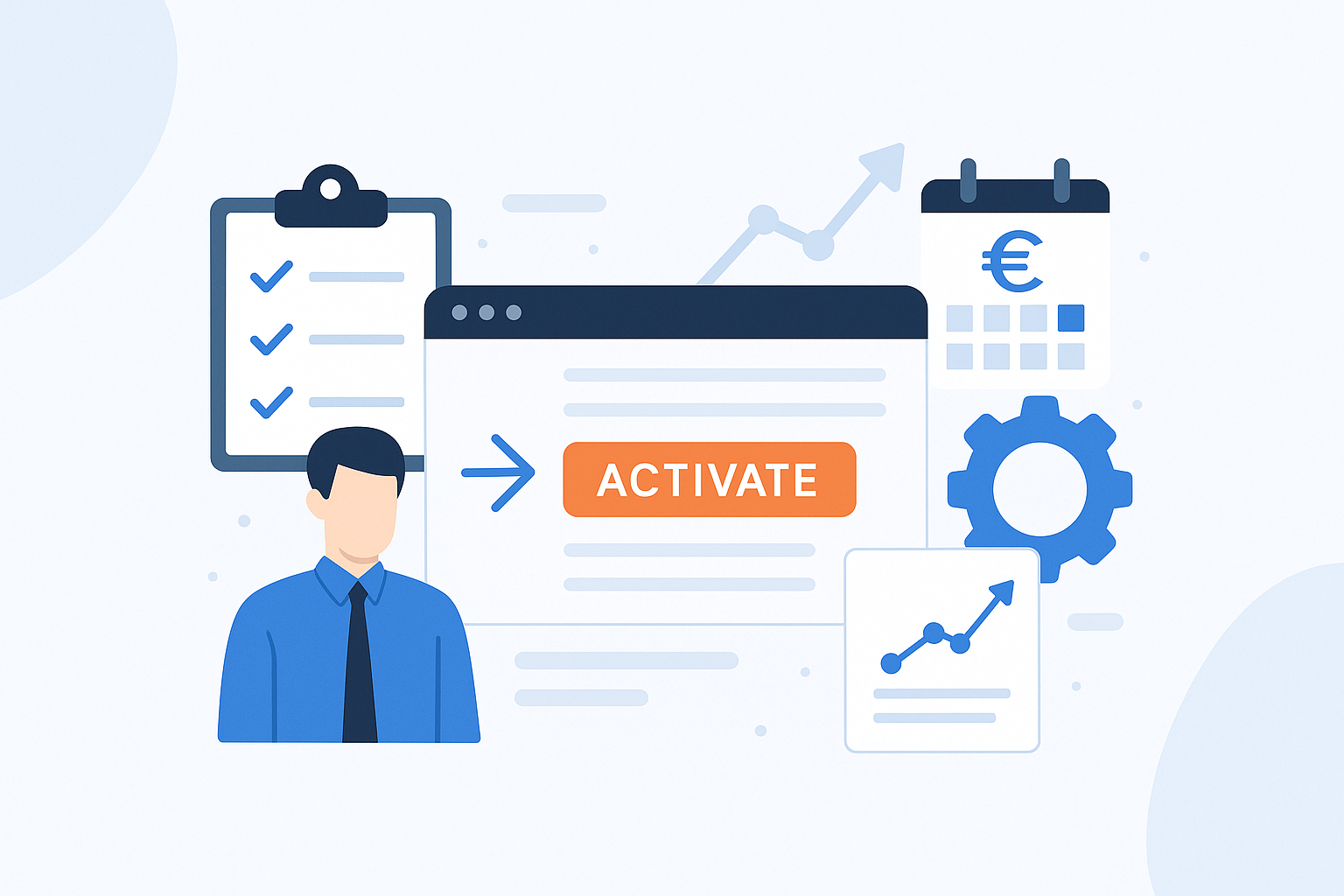For many SaaS businesses, the first interaction with a customer comes with extra costs—onboarding, account setup, integrations, or even training. Charging a setup fee helps recover those expenses while keeping your subscription pricing clear and predictable. But if you apply them incorrectly, setup fees can feel like a hidden surcharge and scare away potential customers.
Here’s how to charge setup fees the right way.
1. Align Setup Fees With Real Costs
Customers accept setup fees when they see the value.
- Cover onboarding work: data migration, custom integrations, or technical support.
- Recover one-time costs: server provisioning, compliance checks, or specialized training.
- Avoid arbitrary fees: don’t just add them as an extra charge—tie the fee directly to an activity.
💡 Tip: Run an internal audit of your onboarding process. Calculate the average cost of getting a new customer live, and use that as the basis for your setup fee.
2. Communicate Value Transparently
A setup fee shouldn’t feel like a surprise. Make it clear what customers get in return.
- Replace generic labels like “Setup Fee” with terms such as Onboarding Fee, Integration Cost, or Activation Charge.
- Add a short description: “One-time setup and configuration to get your account running smoothly.”
- Show the fee on product pages, checkout, and invoices as a separate line item.
When customers see the fee explained, they are more likely to accept it as part of your professional service.
3. Choose the Right Timing
SaaS companies typically have two options:
- Immediate charge: Bill the setup fee as soon as the subscription is created.
- With the first cycle: Add the fee to the first recurring invoice.
If your onboarding requires upfront work before a subscription starts, immediate charging makes sense. If your trial period is part of the customer experience, combine the setup fee with the first billing cycle to reduce friction.
4. Use Setup Fees Strategically in Pricing
Setup fees can support your acquisition strategy:
- Discount or waive fees for promotions → “Sign up this month, no setup fee!”
- Bundle setup services with premium tiers → free onboarding for enterprise plans.
- Segment by customer type → charge setup fees for complex accounts, but keep entry-level customers friction-free.
Done well, setup fees can increase revenue while giving you room to experiment with pricing incentives.
5. Track and Optimize Performance
Don’t just set it and forget it. Review how setup fees impact:
- Conversion rates: Are prospects dropping off at checkout?
- Customer lifetime value (CLV): Does charging upfront reduce churn or scare away high-value customers?
- Revenue mix: Separate setup fee revenue from recurring MRR/ARR in your analytics.
PayRequest automatically tracks setup fees in invoices, reports, and revenue analytics, making it easy to measure their impact.
Example: SaaS Setup Fee in Action
- Product: Professional Plan – €29.99/month
- Setup Fee: Onboarding Fee – €99.00
Customer pays at signup:
- Initial: €99.00 + €29.99 = €128.99
- Monthly: €29.99
Clear, transparent, and value-driven.
PayRequest Setup Fees
Setup fees are not just about covering costs—they’re about framing your service as valuable from day one. When you align them with real onboarding work, communicate them clearly, and measure their impact, setup fees become a tool to strengthen both your revenue and your customer relationships.
With PayRequest, you can configure setup fees on any product or subscription, customize the name and description, and decide exactly when they’re charged—giving you full control over your pricing strategy.

